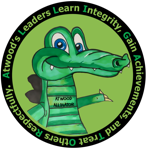Music
Music Report Card
Students receive report card grades for music education. Below is a sample of the music report card skills your student will be assessed on at these marking periods.
- Demonstrates music analysis through listening and evaluating music
- Demonstrates age-appropriate vocal skills
- Demonstrates cooperative and appropriate behavior
Grades in Music
“Advanced”
Always giving 200%.
When singing:
- Sitting up straight
- Opening up your mouth
- Singing out
- Not leaning on desk
- Not crossing legs
- When dancing:
- Being aware of people around you
- Moving correctly
When playing instruments:
- Not playing when being instructed
- Holding mallets correctly
- Alternating hands while playing
- Taking proper care of instruments
When playing the recorder:
- Keeping it quiet while being instructed
- Use proper tonguing
- Play correct notes and rhythms
- Staying quiet and focused
Other activities in class:
- Staying focused
- Getting assignment done correctly.
- Excellent Listener
“Competent”
Always participates in music as far as proper behavior, good singing, correct playing of instruments and following directions.
“Basic”
- Student does the bare minimum in class.
- Sometimes sings
- Sometimes talks to friends
- Sometimes follows directions
“Insufficient”
Student does not participate in class and does not follow directions.
Music Standards for Elementary (K-5)
The four areas where students are assessed on their report card align with the elementary music education standards listed below:
- Singing, alone and with others, a varied repertoire of music
- Performing on instruments, alone and with others, a varied repertoire of music.
- Improvising melodies, variation and accompaniments.
- Composing and arranging music with specified guidelines.
- Reading and notating music.
- Listening to, analyzing and describing music.
- Evaluating music and music performers.
- Understanding relationships between music, the other arts and disciplines outside the arts.
- Understanding music in relation to history and culture.
Attention Students!
Do you or a parent have a musical talent and want to show it off? Let me know if you want to perform in front of your class.
Newsletter
In the music room, we study steady beat, rhythm, dynamics, melody, harmony, form and instruments.
Steady beat is the "heartbeat" or "pulse" of music.
Dynamics is the volume of music...how loud or soft it is. Other areas of dynamics include the following:
- Crescendo means to start soft and gradually build to a louder volume.
- Decrescendo means to start loud and gradually decrease to a softer volume.
- "Forte" means loud.
- "Piano" means soft.
- "Mezzoforte" means medium loud,
- "Mezzopiano" means medium soft.
Melody is the high, low, ups, and downs of the pitches in music.
Harmony is when two or more pitches are sung or played at the same time.
Rhythm is the short and long sounds in music. Rhythm is different then steady beat.
Form is the structure of music.
As far as instruments we listen and identify the different timbres, play classroom instruments, and the fifth graders learn to read music and perform on a recorder.
Music Websites
![]() Classics for Kids
Classics for Kids
![]() DSO Kids
DSO Kids
![]() Creating Music
Creating Music
![]() SFS Kids
SFS Kids
When you come by the school check out the board outside the music room. Pictures of students who have shown incredible improvement since last year, will be displayed.
If you want to listen to the music "This Little Light of Mine" or "Take Me Out to the Ballgame" to help you write lyrics to a new school song please go to Music K-8 Kids. Type the name in the search engine and then listen.
5th Grade Assignment
Practice the following:
- Using your tongue to blow air in the recorder and say "Too"
- Holding your recorder with your LEFT hand on top and right hand on the bottom.
- Play the note B, A, and G with a clear, controlled and gentle sound.
- Continue on to notes High C, High D, Low E, Low D, and F #.
![]() Sing to Learn
Sing to Learn
User Name: Atwood
Password: Atwood
Quick Review:
- Line Notes from Bottom up: E G B D F
- Space Notes from the Bottom up: F A C E
